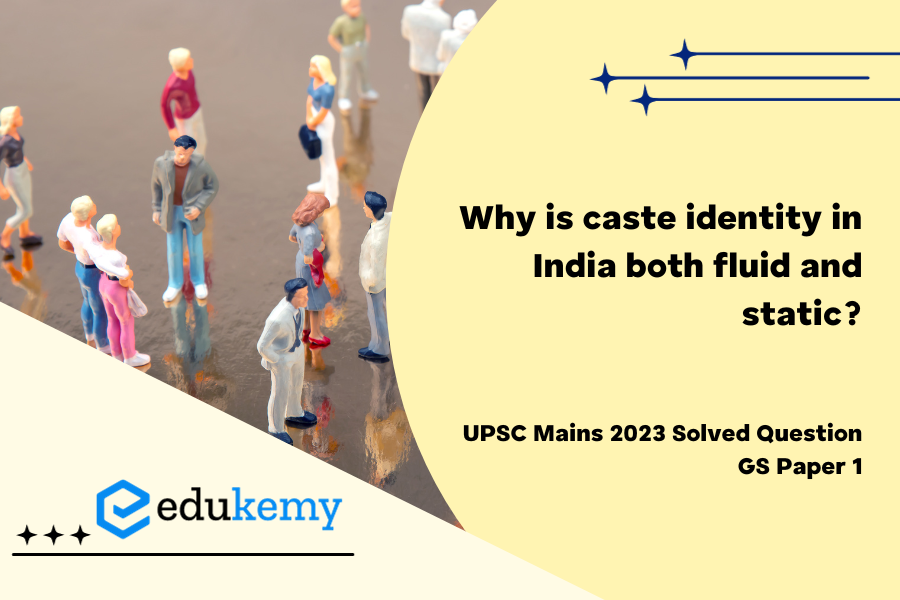UPSC Mains General Studies Paper – 1 Mains 2023
UPSC Mains Civil Services IAS Exam Question Paper – 2023
Contents
Introduction
The concept of Caste Identity encompasses the placement of one’s caste community within a social hierarchy. In India, this identity is multifaceted, displaying a dual nature that is both adaptable and entrenched. While there are instances of social mobility and shifts in caste dynamics, the persisting realities of caste-based discrimination and inequality highlight its enduring static aspects.
Caste consciousness in Indian society is inversely proportional to socio-economic well being. While urbanisation and economic integration has blurred the lines for ‘privileged’ Caste, it continues to haunt the backward castes as Banquo’s ghost.
Body
The static nature of caste identity is visible as below
- Norms of socialisation:
- Historical underpinnings of educational backwardness, limited skill sets, customary ostracization has made caste and ever existing pervasive identity for the socially and educationally backward castes.
- Besides, eco chambers like dedicated social media groups for a particular caste have deepened the identity.
- While state action has targeted untouchability, the other markers of caste consciousness- caste identity, caste based ostracization, varna division and economics continue to exist.
- Caste as valid identity:
- In absence of alternative collective identity, caste has emerged as recusal for demanding political rights, legal rights and welfare.
- caste based pressure groups demanding for reservations in educational institutions and employment. Establishment of DICCI (dalit indian chamber of commerce and industry)- manifestation of dalit identity
- e.g. endogamous prevalence. The findings of Social Attitude Research in India suggested nearly 70% are still against inter-caste marriages.

Caste also has acquired a ‘fluid’ character in the following manner-
- Caste and urbanisation:
- Education, employment, remunerative skill set, cosmopolitan city culture has mothered the case of meritocracy and individualism blurring caste existence for the ‘upper’ castes.
- Common living regions (though slums but not bastis)have significantly strengthened economic identity replacing the caste identity.
- The notions of purity and pollution have taken a relative backseat. Also, the occupation tied nature of caste has significantly diluted for urban poor.
- Selectively fluid:
- The presence of a ‘fluid’ identity is also selective and apparent in its very nature for the ‘upper’ castes.
- For example- while endogamy within the ‘dwija’ is not frowned upon, honour killings on directions of khaps for intercaste marriages (‘upper’-’lower’ castes) still persist.
- State policy driven fluidity:
- The emergence of dominant caste groups with assertive political rights in specific regions like patidars in Gujarat, OBCs in other regions as an after effect of pursuing state policy, like- land reforms followed by the Green revolution.
Conclusion
Hence, Caste in India is an evolving paradigm, which has shown resistance in certain spheres, but Adaptation in others. Recognizing this duality is crucial for fostering harmony and progress in order to establish a society which is just, fair and inclusive.
In case you still have your doubts, contact us on 8792740517.
For UPSC Prelims Resources, Click here
For Daily Updates and Study Material:
Join our Telegram Channel – Edukemy for IAS
- 1. Learn through Videos – here
- 2. Be Exam Ready by Practicing Daily MCQs – here
- 3. Daily Newsletter – Get all your Current Affairs Covered – here
- 4. Mains Answer Writing Practice – here
Visit our YouTube Channel – here


